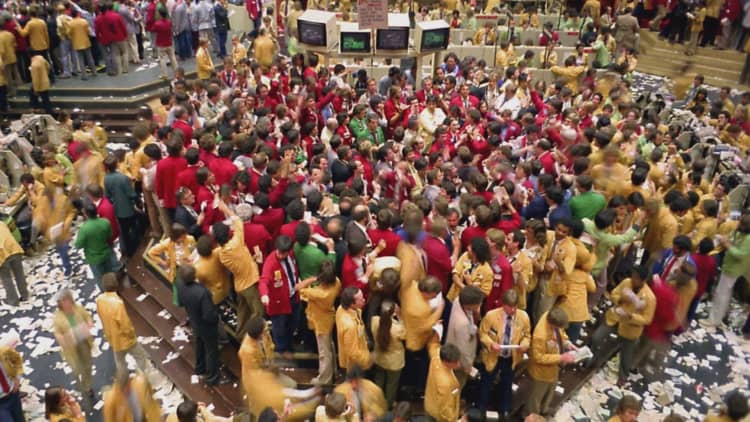
For many, the first temptation when market turmoil erupts is to just do something — an urge that usually results in selling, an action that often concludes in regret.
For others, the impulse is to do nothing — sit on your hands until the storm passes, they say, because it always does.
Still others see opportunity at every turn and jump in with both feet.
The best course, though, lies somewhere between. Indiscriminate selling is a fool's game; willy-nilly buying assumes you know when the end is in sight; doing nothing risks getting caught in a vortex that could take years to escape (see crisis, financial).
Figuring out how to navigate such an environment requires both a cool head and a willingness to acknowledge where common sense adjustments are needed without going overboard. Investors are caught in a tough spot as stocks again declined aggressively Thursday amid fears of rising interest rates and a general gravitational pull toward selling.
There's a very good book about this subject. Released in early 2016, it was called "The 30-Minute Millionaire" and co-authored by Peter J. Tanous and, you guessed it, me. The premise was that many people spend too much time managing their portfolios, and should spend just a half-hour a week on their investments.
But in doing so, it went to a deeper subject: How the actions of overambitious central banks had changed the investing paradigm and would make strong returns a challenge in the years ahead. I believed then and I still do now that the Fed's stage managing of the markets and economy would pose some difficult challenges ahead for investors that would limit returns and create significant amounts of angst.
In Chapter 9, titled "Fear the Fed," I wrote:
"History has shown us that extreme monetary easing conditions cannot go on forever. Therefore, the Fed will stop. When it does stop, investors like you will have to pick up the pieces."
The chapter also speaks to the "woeful misallocation of capital in the era of Federal Reserve largess" and a central bank that "became too enamored and too confident of its role and has stayed around much longer than needed."
Two chapters later, we featured separate question-and-answer passages with three of the market's finest minds: Mohamed El-Erian, chief economic advisor at Allianz; Jim Paulsen, chief investment strategist at Leuthold Group; and Liz Ann Sonders, chief investment strategist at Charles Schwab.
Each was asked how investors should handle the fallout of when the Fed starts pulling away the punch bowl. Rather than provide my own pontificating, here's a sampling of their views:
El-Erian used a "'T' junction" as a metaphor of potential outcomes: one a hard landing from Fed policy and other a soft landing. He recommended balancing between risk and safety.
"The way I like best is the barbell portfolio, which is you reduce your exposure to the most heavily trafficked markets, which are the public markets. You take some of that and put it in cash, which gives you the optionality for the future. [El-Erian said the Fed was anti-optionality in that it wanted you to put money in risk.] But you don't totally give up on the upside. You put it in higher-risk areas that are less trafficked — venture-type elements, competing markets in developing countries. You find that a large number of smart hedge funds are doing that now."
Even back in 2015 when we did the interview, Paulsen spoke presciently about diversifying outside the U.S., which he believed was on its way to overheating. He also, though, spoke more broadly about the approach to portfolio management that is a good lesson for times like these.
"The vast majority of your portfolio, you probably literally should take sort of a once a year approach towards it. Set it in motion and revisit it once a year. If you just can't stand that, then give yourself a small portion of your portfolio that you can play with during the year. If you screw that up, it won't screw up your overall portfolio. At least it gives you enough chance to stay sharp."
Finally, Sonders spoke against the "never fight the Fed" mentality, saying that while central bank action is important, assuming that easing will last forever is a huge mistake. Like the other two, she stressed the need for core principles to guide investing and to avoid the urge to chase rallies or panic in sell-offs.
"We talk about the rear view mirror and performance chase. We also say turn the mirror to yourself and understand who you are as an investor, what are the things that are going to trip you up. True risk tolerance is, 'How much can my portfolio decline before I make a really dumb decision and panic and do something that turns out to be a really wrong decision?'"
WATCH: Five strategies you should use to protect your portfolio



